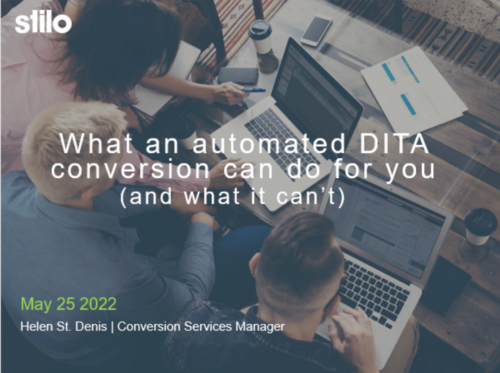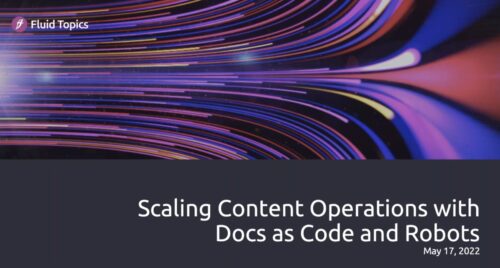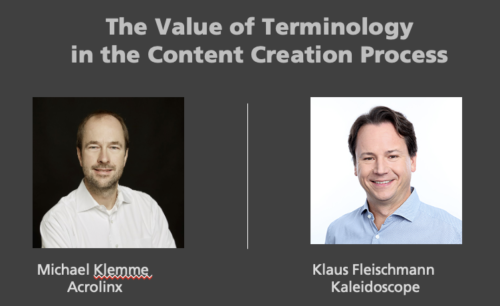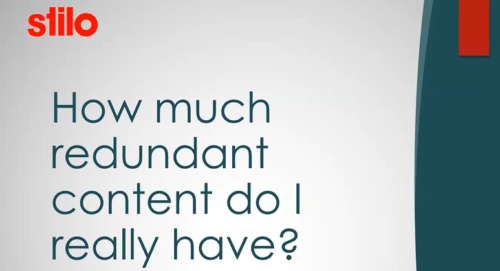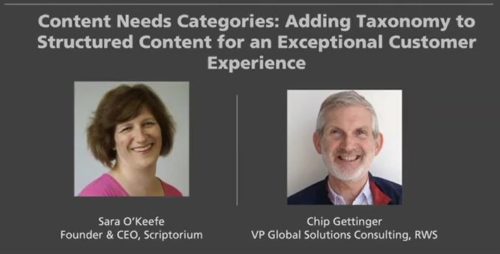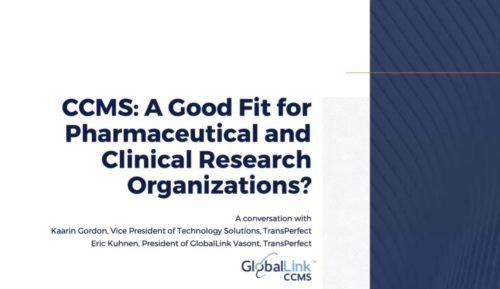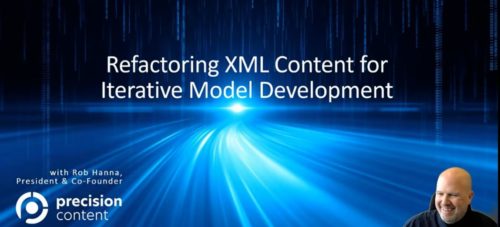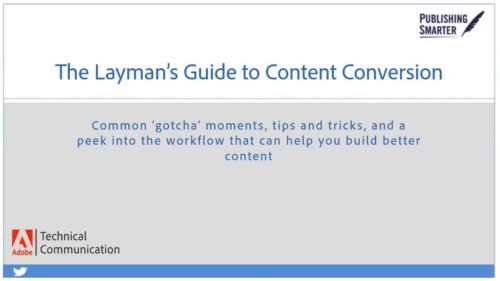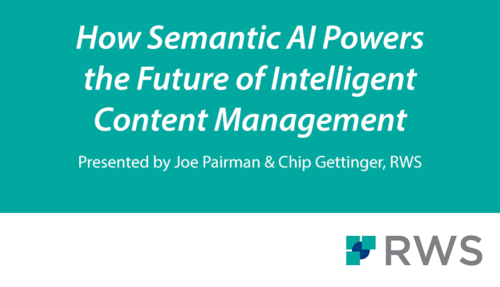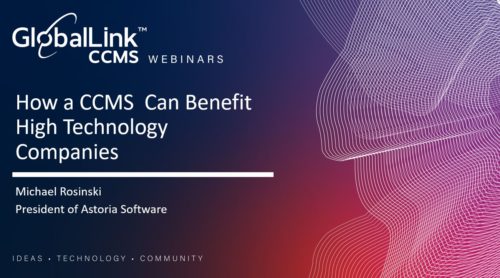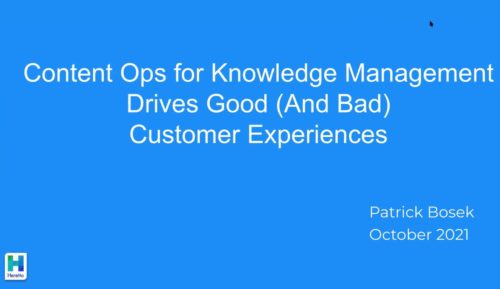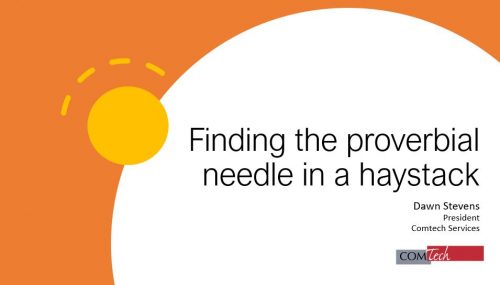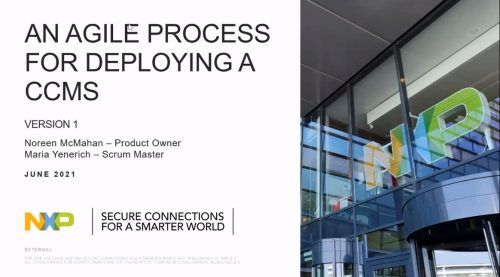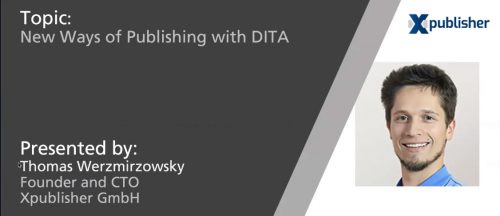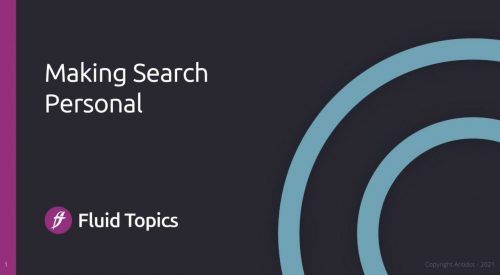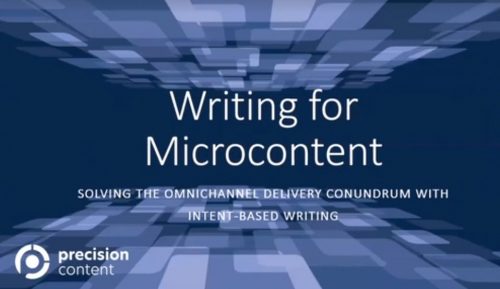 Presented by Helen St. Denis
Pretty easily, we can get a basic DITA structure from headings, tables and lists in the legacy content. As well, though, for each different source format there are a number of ways to extract information that can be used to refine the DITA output. Likewise, there are ways to enrich the content automatically.
There are, however, some things it can’t do… yet.
As more and more types of content are being moved to DITA, a greater variety of legacy formats need to be converted. We’ll look at some of them to see what can be gleaned from each, beyond the basic structure, and some of the challenges that remain.
Presented by: Helen St. Denis
Helen started at Stilo over twenty years ago as a technical editor. As Conversion Services manager, she’s helped customers convert millions of pages of content to DITA, and worked with organizations with many different approaches to, and reasons for, the move to structured content.
Presented by Helen St. Denis
Pretty easily, we can get a basic DITA structure from headings, tables and lists in the legacy content. As well, though, for each different source format there are a number of ways to extract information that can be used to refine the DITA output. Likewise, there are ways to enrich the content automatically.
There are, however, some things it can’t do… yet.
As more and more types of content are being moved to DITA, a greater variety of legacy formats need to be converted. We’ll look at some of them to see what can be gleaned from each, beyond the basic structure, and some of the challenges that remain.
Presented by: Helen St. Denis
Helen started at Stilo over twenty years ago as a technical editor. As Conversion Services manager, she’s helped customers convert millions of pages of content to DITA, and worked with organizations with many different approaches to, and reasons for, the move to structured content. -
Recorded: May 25, 2022
 Presented by Helen St. Denis
Pretty easily, we can get a basic DITA structure from headings, tables and lists in the legacy content. As well, though, for each different source format there are a number of ways to extract information that can be used to refine the DITA output. Likewise, there are ways to enrich the content automatically.
There are, however, some things it can’t do… yet.
As more and more types of content are being moved to DITA, a greater variety of legacy formats need to be converted. We’ll look at some of them to see what can be gleaned from each, beyond the basic structure, and some of the challenges that remain.
Presented by: Helen St. Denis
Helen started at Stilo over twenty years ago as a technical editor. As Conversion Services manager, she’s helped customers convert millions of pages of content to DITA, and worked with organizations with many different approaches to, and reasons for, the move to structured content.
Presented by Helen St. Denis
Pretty easily, we can get a basic DITA structure from headings, tables and lists in the legacy content. As well, though, for each different source format there are a number of ways to extract information that can be used to refine the DITA output. Likewise, there are ways to enrich the content automatically.
There are, however, some things it can’t do… yet.
As more and more types of content are being moved to DITA, a greater variety of legacy formats need to be converted. We’ll look at some of them to see what can be gleaned from each, beyond the basic structure, and some of the challenges that remain.
Presented by: Helen St. Denis
Helen started at Stilo over twenty years ago as a technical editor. As Conversion Services manager, she’s helped customers convert millions of pages of content to DITA, and worked with organizations with many different approaches to, and reasons for, the move to structured content. -
Recorded: May 17, 2022
 While product cycles are getting shorter in all industries, down to daily releases for SaaS vendors, technical documentation teams have to keep up with the pace. Information needs to be written faster and delivered in sync.
Join Fabrice Lacroix, CEO and founder of Fluid Topics, and Gaspard Bébié-Valérian, certified technical writer and functional consultant, as they untangle the complex process of continuous content delivery and unveil new methods and processes to embrace the new landscape of documentation. They will share their insights and experience as they explore the collaborative potential between SMEs and tech writers opened by Docs as Code, examine the tooling behind a continuous documentation flow, and showcase the example of a robot writing release notes.
Presented by Fabrice Lacroix & Gaspard Bébié-Valérian:
Fabrice Lacroix is a serial entrepreneur and a technology pioneer. He has been working for 25 years on the development of innovative solutions around search technology, content enrichment and AI. He is the founder of Fluid Topics, the leading Content Delivery Platform that reinvents how users search, read and interact with technical documentation.
At the crossroads of engineering and social sciences, Gaspard enjoys exploring the breadth of technologies involved in technical documentation, including structured documentation, CCMS, and collaborative paradigms like docs as code. Gaspard works as Functional Consultant at Antidot helping clients get the most out of Fluid Topics.
While product cycles are getting shorter in all industries, down to daily releases for SaaS vendors, technical documentation teams have to keep up with the pace. Information needs to be written faster and delivered in sync.
Join Fabrice Lacroix, CEO and founder of Fluid Topics, and Gaspard Bébié-Valérian, certified technical writer and functional consultant, as they untangle the complex process of continuous content delivery and unveil new methods and processes to embrace the new landscape of documentation. They will share their insights and experience as they explore the collaborative potential between SMEs and tech writers opened by Docs as Code, examine the tooling behind a continuous documentation flow, and showcase the example of a robot writing release notes.
Presented by Fabrice Lacroix & Gaspard Bébié-Valérian:
Fabrice Lacroix is a serial entrepreneur and a technology pioneer. He has been working for 25 years on the development of innovative solutions around search technology, content enrichment and AI. He is the founder of Fluid Topics, the leading Content Delivery Platform that reinvents how users search, read and interact with technical documentation.
At the crossroads of engineering and social sciences, Gaspard enjoys exploring the breadth of technologies involved in technical documentation, including structured documentation, CCMS, and collaborative paradigms like docs as code. Gaspard works as Functional Consultant at Antidot helping clients get the most out of Fluid Topics. -
Recorded: April 27, 2022
 Presented by Klaus Fleischmann
OK, so we have all understood that terminology is important for content, AI, search engines, consistent naming, etc.
But what do you need to do
Presented by Klaus Fleischmann
OK, so we have all understood that terminology is important for content, AI, search engines, consistent naming, etc.
But what do you need to do
- to launch a professional and scalable terminology process,
- to convince your boss and your peers that your company needs it and
- to get this off the ground quickly and efficiently with the help of modern terminology software?
-
Recorded: April 20, 2022
 Presented by Géraldine Boulez
Your technical documentation is one of your company’s most valuable assets. The bad news is: your execs and most of the other departments in your organization don’t know about it. Even worse, some even consider tech content as an unproductive cost and try to cut it to a minimum.
Still, your documentation can achieve your company’s most critical goals in all customer-facing areas, and it’s high time your organization understood and embraced the business opportunity brought by tech doc.
In this webinar, you will learn:
Presented by Géraldine Boulez
Your technical documentation is one of your company’s most valuable assets. The bad news is: your execs and most of the other departments in your organization don’t know about it. Even worse, some even consider tech content as an unproductive cost and try to cut it to a minimum.
Still, your documentation can achieve your company’s most critical goals in all customer-facing areas, and it’s high time your organization understood and embraced the business opportunity brought by tech doc.
In this webinar, you will learn:
- How to debunk the most common misconceptions about the business value of tech doc
- How to connect your tech content to your company’s business goals
- and how to demonstrate to your execs how your documentation can effectively generate gains in three main areas of business: Marketing, Customer Support, and Field Services.
Presented by:
Géraldine is passionate about new technologies and their ability to solve people and business problems. This is what has led her to product management, marketing and business development positions in fast-growing tech companies and innovative corporations for over twenty years. Geraldine is VP of Marketing at Fluid Topics, the leading Content Delivery Platform that reinvents how users search, read and interact with technical documentation.
-
Recorded: April 13, 2022

 Presented by Michael Klemme and Klaus Fleischmann
Presented by Michael Klemme and Klaus Fleischmann
Terminology is at the core of great content. When used consistently, it helps you communicate precisely and efficiently, which is an approach to your brand communication. It also makes your content accurate.
But it’s important to have a sound process in place to manage your terminology. Join us and learn how to:
-
Make sure all stakeholders have input into your terminology set
-
Set a process for consent and approval of your terms
-
Make sure you have a consistent and failsafe process to
-
Have all your terms for checking in Acrolinx, as the content quality solution of choice
-
Make sure all terminology action is concentrated in quickTerm, as the leading terminology system
-
Michael Klemme is a Senior Solutions Architect at Acrolinx. He advises new and existing customers on how they can efficiently integrate Acrolinx into their processes and helps partners to develop integrations.
Klaus Fleischmann studied translation and IT in Vienna, holds an MA in Conference Interpreting from Monterey, California, and a MAS in Technical Communication from Krems, Austria. In 1996, he founded Austria-based Kaleidoscope, a company implementing content, translation, and terminology management processes for internationally active companies. Kaleidoscope develops online collaboration software for enterprise-level terminology workflow, translator query management, in-country review etc., making the translation quality process comprehensible and strategically manageable. In 2007, he became CEO of Austria´s leading LSP, Eurocom Translation Services GmbH. Always active in the industry, Klaus got voted into the Gala Board of Directors in 2015 and 2017. -
-
April 6, 2022 Content reuse is one of the many advantages of moving to DITA and a structured standard. It helps us reduce the amount of overall content we have, improve consistency, and decrease redundancy. However, it is difficult to visualize this value before the conversion takes place. Estimates can be off, and it is hardly ever clear how much content we can actually reuse from our documentation. Typos and partial matches only complicate our futile estimates. Narrowing the scope of this approximation by investigating similar matches in our source content before conversion can provide valuable insight to the potential benefits of moving to a structured standard. Join TJ Dhaliwal in this session as he uses Stilo’s Analyzer and Migrate to investigate source content for similar and exact matches. Then, further use that information to plan for conrefs, keyrefs, and topicrefs before any transformation takes place. Conclude by deduplicating exact topic matches and realizing some of the potential that was uncovered in the beginning. Presented by: TJ Dhaliwal is a Technical Sales Product Specialist at Stilo, helping customers uncover solutions to their content conversion needs. With a strong technical background in engineering combined with a passion for public speaking, he’s been able to successfully bridge the gaps between project stakeholders. As a problem solver, TJ has helped several enterprise-level companies convert tens of thousands of pages of their content to DITA. He’s recently taken lead on and helped bring to market Stilo’s newest product, Analyzer.
-
Recorded: February 23, 2022 Structured content provides numerous benefits for organizations with authoring, managing, and delivering information. Perhaps your organization has realized these benefits—but what’s next? A formal content classification system, or a taxonomy, provides a framework that supports search, filtering, classification, consistent terminology, and more. The combination of taxonomy and structured content opens up compelling possibilities for digital delivery. Add continuous updates and advancements in business data, and you can transform the customer experience—but you may feel a little exposed out on the leading edge of technology. Sarah and Chip will present and discuss emerging trends, techniques, and technology for your digital information initiatives. During the webinar you’ll learn:
- How do you select and manage a good taxonomy?
- Classifying content – human, machine, or a combination?
- Coordinating taxonomy terms across various teams and languages
- Taking advantage of Semantic AI
- Business drivers examining tagging quality vs. quantity
- Best practices and actions for you
-
February 15, 2022 Just putting your technical documentation on your webpage as a PDF for download will not make you a content hero. PDF is a given – a fundamental requirement. However, both business leaders and end customers expect more than just a documentation portal or a well-designed PDF. They want contextually relevant, personalized, consistent, conversational, and scalable content experiences. But how to deliver on this expectation? In this session, Stefan Gentz, Senior Worldwide Evangelist for Technical Communication at Adobe, will share some insights from the recent Adobe-commissioned Forrester study. Forrester surveyed 450 decision-makers on Content Experience Management to understand how global brands deliver relevant and contextual experiences across touchpoints. He will explore the design of positive customer journeys from marketing to technical support and self-service and back to sales – experiences that provide 360° content experience for your customers and handhold them across their whole content journey. Presented by: Stefan’s mission is to inspire enterprises and technical writers around the world and show how to create compelling technical communication content with the Adobe Technical Communication tools. He is also a certified Quality Management Professional (TÜV), ISO 9001 / EN 15038 auditor, ISO 31000 Risk Management expert, and Six Sigma Champion. As a sought-after keynote speaker and moderator at conferences around the world, he travels around the globe half of the year. Besides that, he has been the European Ambassador for the Globalization and Localization Association (GALA) for many years, a member of the tekom Conference Advisory Board for several years, and is now a member of the tekom iiRDS working group for Intelligent Information and member of the OASIS DITA Adoption Committee. In 2016, Stefan Gentz was awarded by MindTouch as one of the Top 25 Leading Content Strategist Influencers in the world and as one of the Top 25 Content Experience Influencers in the world in 2017. Stefan Gentz on LinkedIn Stefan Gentz on XING @stefangentz on Twitter www.adobe.com
-
January 12, 2022 Moving to structured authoring and implementing a CMS are critical projects that will generate long-term efficiency gains and significant savings. But before you get there, there are great hurdles to overcome. First and foremost, there's winning budget approval from your execs, who will have a singular focus on risk and ROI. Second, you need to maintain a high level of commitment and buy-in from those executives over the years that re-engineering of content production can last. Too many content restructuring projects fail or don’t even start because they cannot demonstrate a quick and tangible return on investment - and this is where Dynamic Content Delivery changes the game. Dynamic Content Delivery provides outstanding content experiences to your users and creates immediate value for your company without requiring a big bang in your writing process. It earns you internal support, money, and time you can leverage to optimize your content restructuring process. In this webinar, you will learn:
- How Dynamic Content Delivery generates value from your existing content, no matter the writing tools and methods you are using now
- How to achieve quick wins and build a fast ROI to gain support from your Execs for your content project
- How to optimize your project to move to structured authoring and make it a success
-
December 14, 2021 Attend this webinar if you’re looking to:
- Provide your audience with content that is accurate and compliant
- Align your global workforce with One Voice
- Accelerate your time to market thanks to less time for review and editing
- Reduce your source content and translations by 40%
- Show industry credibility by complying with industry standards to help open new markets
-
December 8, 2021 Kaarin Gordon discusses the choices and challenges for efficient content reuse facing Pharmaceutical and Clinical Research Organizations. What they want is a set of tools and platforms for easy content reuse, automatic propagation of changes from a single source, and content governance. What they have is Microsoft Word; it’s easy to use but limited to cut-n-paste content reuse. What they must deliver is multi-lingual content for a variety of uses – faster, more cost-effectively, and at lower risk. Join Eric Kuhnen in conversation with Kaarin Gordon for an engaging discussion of how component content management systems amplify or ameliorate some of the difficult content complexities that organizations face today. Presented by: As the Vice President of Life Sciences Technology Solutions at TransPerfect, Kaarin Gordon works closely with organizations on solutions to more effectively develop, manage, translate, and deliver multilingual content. She has spent 20+ years working with pharma, CROs, and medical device companies and focused on developing and implementing solutions that address global content challenges and result in decreased cycle time, reduced risk, increased consistency, and lower costs. Kaarin has a BA from the University of Michigan and an MBA from Columbia University. Eric Kuhnen is the President of GlobalLink Vasont, one of TransPerfect’s GlobalLink CCMS solutions. He has more than 30 years of experience in product research, development, and management. Prior to his current role, managed global operations, product management, pre-sales, and marketing for Astoria Software, a division of TransPerfect, Inc. He has also held profit-loss responsibilities with GoRemote and Oracle Corporation. He has a Bachelor of Science degree in Computer Science from Brigham Young University.
-
December 1, 2021 Developing robust content models can never be a once-and-done endeavor where IAs are required to incorporate all aspects into the design prior to authoring. Instead, an iterative approach is needed to allow for incremental improvements not just during setup but long into production. Join Precision Content’s President and Chief Information Architect, Rob Hanna, to explore methods the company uses to refine models and update the content corpus through scheduled refactoring activities. Presented by: Rob Hanna is an award-winning technical writer and content strategist and an industry leading expert in structured XML authoring, DITA, and content management. In 2014, Rob was awarded the rank of Fellow of the Society for Technical Communication (STC) and earned the Enterprise Content Management Specialist (ECMs) designation from AIIM. In 2017, he was named one of the top 25 global leaders in content experience strategy by Mind Touch. He founded Precision Content in 2013 after nearly 20 years in the industry as a technical writer, information architect, knowledge management specialist, and taxonomy expert. In 2018, Precision Content joined Google, Adobe, and Acrolinx on the list of "Top 100 Companies that Matter Most in Digital Content Industry" by EContent Magazine. See http://www.linkedin.com/in/singlesourceror for more information.
-
November 11, 2021 Content authors need to consider many factors while converting their existing content to structured content, including analyzing the content at its source. This exercise is interesting yet challenging, vexing, but rewarding. But what are those factors you need to think about for this conversion? For starters, you need to consider:
- Character styles and how they are assigned (Use the style named Emphasis? Press Ctrl+I? Use a toolbar icon? Is there a difference?)
- Paragraph styles and how they are assigned (Did you skip bullet 1 and go right to bullet 2 because it looks better and, if you did, what does it mean?)
- Images and how to import them (Did you copy/paste or use the import setting? If so, how did you import it? As a link to the source?)
- Links between files or the web (Did it just get typed in, or was this inserted using a linking tool? How will it convert?)
- Page layout, tables, design, variables, equations, and so on
-
October 20, 2021 Semantics add unique benefits for content, especially within organizations utilizing structured content. Whether content is for detailed product documentation, polished marketing materials, or accurate, insightful employee enablement, all audiences gain by quickly finding what they want. While improving findability is key, providing accurate information recommendations dramatically increases relevancy with minimal use of personal data. From pages to personal assistants, reuse metrics to insights, content that connects to core semantics—the real-world ideas and objects it refers to—becomes truly intelligent. But, of course, benefits like this don't come from just pushing a button—or can they? During this webinar, Joe and Chip will discuss that while machine learning is a good start, it may not give customers the full value, clarity, or futureproofing required. So we challenged ourselves to productize a semantic AI approach that drives a polished end-user experience—and also appeals to busy editorial teams who care about quality but need to beat deadlines. We'll also examine emerging best practices for the practical adoption of semantic AI within your organization. Learn how RWS built a layered solution for Tridion, combining it with the power of semantic AI. These innovations fuse a powerful partnership of Tridion for content management excellence with PoolParty for taxonomy management. The results provide content teams with the power, automation, and accuracy of modern semantics with human validation. Presented by: Chip Gettinger is VP Global Solutions Consulting at RWS, managing a team that works with customers in maximizing global content with RWS. He has experience working with customers to develop global content strategies, business ROI adoption drivers, change management, and technology adoption for component content management systems. He speaks and blogs about customer successes working closely with industry standards, partners, and customers in technology solutions and deployments. Joe Pairman is Senior Product Manager, Tridion Docs. By looking at customers' underlying needs, and recognizing technical opportunities, he has built truly innovative solutions with strategic value. Joe designed and led the development of a personalized guidance app that helped millions of users without requiring any of their data. He also integrated a knowledge model with granular structured content to automatically give data integrators a broad overview of their available implementation options and next actions. Most recently, Joe brings the power of his first B2B product love –Tridion Docs – to a whole new market and user sector of smart specialists who don't have time to learn structured authoring. Product work is more than just building features – it's bringing people together to shape vision, plans, and priorities across the whole software lifecycle, in a way that keeps the original value when the ground situation inevitably changes. Joe has learned to get things done with solid, secure, engineering without losing track of the path to greater customer value.
-
October 12, 2021 For high tech companies, how to initiate requirements for a CCMS technical product documentation project; develop ROI justification metrics for Executive Management, and conduct a successful implementation.
- What were the main drivers for you and the company to embark on a CCMS Project?
- What were the deficiencies of the current CCMS that you were using?
- How did you obtain C Level Management approval to embrace the initiative and what were the ROI and performance metrics used to evaluate the success of the project?
- What was the most challenging issue that you encountered during the implementation process and how did you resolve it?
-
October 6, 2021 Our content shapes experiences and drives behavior. The question then becomes, is your content causing positive or negative experiences and behaviors? In this presentation, we’ll take a critical look at content operations (Content Ops), the processes behind your knowledge, and how they make or break customer experiences. You’ll learn:
- Tactics to turn your haphazard workflow into a repeatable process
- Overlooked signs that your content hinders customer experience
- How to ensure your content capability can scale with your company’s growth
-
September 29, 2021 Not all Analytics are created equal. Nor are they fit for the same purpose. Google Analytics and other web analytics tools are incredibly helpful for marketing content. But when it comes to product documentation, they are outranged by dedicated Content Analytics. Next-gen Content Analytics is designed for technical content and understand the complexity and structure of your documentation down to the topic level. Far beyond the web analytics capabilities, they generate the type of insights that benefit not only the tech content professionals but the entire organization. In this webinar, you will learn how the documentation team can capture meaningful content metrics and drive change and improvement to the content, the product, and ultimately to customer service and user satisfaction leveraging dedicated Content Analytics. Presented by: Fabrice Lacroix is a serial entrepreneur and a technology pioneer. He has been working for 25 years on the development of innovative solutions around search technology, content enrichment and AI. He is the founder of Fluid Topics, the leading Content Delivery Platform that reinvents how users search, read and interact with technical documentation.
-
August 26, 2021 With the plethora of content available to users today, it’s often a wonder that they are able to find any relevant information to their queries. In fact, it’s the most common complaint Comtech hears when conducting user studies for our clients: “I can’t find what I’m looking for in a reasonable amount of time.” What can we as technical writers do to address that complaint? We hear a lot about taxonomies and metadata and their potential influence in making our content more findable. However, Google uses over 200 ranking factors in its search algorithm that go well beyond this basic categorization. Surprisingly, a significant number of these ranking factors fall clearly within the realm of a technical writer’s responsibilities. In this rapid fire webinar, Dawn presents dozens of proven and speculative factors that you as a technical writer can address to optimize your content for findability. Presented by: Dawn Stevens is the President, and owner of Comtech Services and the Director of the Center for Information-Development Management. With over 32 years of experience, including 20 years at Comtech, Dawn has practical experience in virtually every role within a documentation and training department, including project management, instructional design, writing, editing, and multimedia programming. With both engineering and technical communication degrees, Dawn combines a solid technical foundation with strong writing and design skills to identify and remove the challenges her clients face in producing usable, technical information and training.
-
July 21, 2021 With this webinar, we are pleased to announce the release of the first-ever e-learning course to train technical writers and subject matter experts on the use of Simplified Technical English (STE), the global standard for writing clear and concise content. Most of the world’s leading companies have accelerated their digital transformation efforts during the pandemic—efforts that are not slowing down. Content plays a key role in digitalization, as it has an important impact on the customer experience, where good quality content will help grow and create new business and service models and ensure safe product use. Because of this key role, it is important that global writing teams learn how to write content that is accurate, clear, aligned, and easy to find by their customers. Through STE companies can maximize the value of their enterprise content, whether this is for technical documentation, marketing, or support. Technical writers will be able to further improve their skills and show industry credibility through an e-learning course, which one could do at any time and from any location. During this webinar, participants will learn more about STE, the values it brings, and how this e-learning course will help you create the best possible content. Presented by: Berry Braster has been in the technical documentation field for over 18 years and has helped implement content strategies, including the use of DITA and HyperSTE controlled language software. As Technology Director, Berry is involved with connecting technical documentation to IoT, and how to leverage on technologies like Augmented and Virtual Reality.
-
June 30, 2021 NXP successfully deployed a DITA CCMS in 2016, in a SaaS environment, to manage technical product documentation. A software and system upgrade to Tridion Docs 14 (CCMS) was planned in 2019-20 to take advantage of new capabilities, performance improvements, system and infrastructure updates. Managing a successful CCMS upgrade requires detailed coordination, planning, testing, communication, and execution. From the webinar, you will learn how NXP effectively utilizes SAFe methodologies, together with their CCMS vendor RWS, to manage and execute the upgrade. Noreen and Maria worked together to coordinate activities on an NXP Agile Release Train (ART) as both are SAFe-certified. Noreen heads the RWS core team, which consists of representatives from several NXP business lines. Maria is from IT, working as the upgrade project Scrum Master. Overall, the upgrade was a success, as it was completed on time and within budget. NXP did encounter some unexpected issues that were managed following this process. During this webinar, Noreen and Maria will discuss how the business and IT benefited by utilizing SAFe methodologies to document CCMS configurations, develop and execute test cases for upgrade testing, managed communications with RWS and third-party vendors, communicated benefits to the business users, and moved all users into an upgraded production system with minimal interruptions. Presented by: Maria Yenerich works as a Scrum Master within the NXP Marketing Information Technology (IT) group. With 20+ years of system management experience, Maria has an undergraduate degree from Creighton University and a Master’s of Business Administration from the University of Illinois. Noreen McMahan has a Ph.D. from the University of Texas in Austin. In 2008, Noreen joined a team deploying a new CCMS in a global company. For almost a decade, she trained users of the CCMS around the world. She authored the online training in the DITA environment using the same tools as the writers and engineers she trained. She began her role as NXP RWS Product Owner after working on a team that deployed SDL LiveContent Architect as the new NXP CCMS in 2016. Later, as the 2020 pandemic gained momentum, Noreen worked on an Agile team that successfully completed an RWS upgrade of the CCMS to Tridion 14. She, therefore, has experience in deploying a new CCMS and in upgrading an existing one. Chip Gettinger is VP Global Solutions Consulting at RWS, managing a team that works with customers in maximizing global content with RWS. He has experience working with customers to develop global content strategies, business ROI adoption drivers, change management, and technology adoption for component content management systems. He speaks and blogs about customer successes working closely with industry standards, partners, and customers in technology solutions and deployments.
-
June 10, 2021 The Xpublisher editorial system organizes every piece of content – regardless of how it will be used later – to provide fast, error-free, and highly cost-effective multichannel digital and print publishing. Preparing your content for a variety of formats and channels couldn’t be easier. In this webinar, Thomas Werzmirzowsky will present new ways of DITA integration with Xpublisher. Xpublisher offers the best possible data quality with XML-based data management and is a pioneer for the challenges of the future by presenting new solutions: the simple creation, management, and publication with DITA. Presented by: Thomas Werzmirzowsky is founder and Chief Technology Officer at Xpublisher GmbH, a leading software provider specialized in the area of XML publishing. Since 2009, the company has been advising numerous leading international companies and organizations from the aerospace, technology, education, publishing, public administration and many other industries in the area of multichannel publishing and accompanying them on their way to digitization.
-
June 2, 2021 Various surveys are showing that the majority of the world’s leading companies have accelerated their digital transformation efforts during the pandemic – efforts that are not slowing down. This presentation will discuss the key role content plays in the field of digitalization, and what you should do to future proof your content while elevating your customer experience. Presented by: Berry Braster has been in the technical documentation field for over 18 years and has helped implement content strategies, including the use of DITA and HyperSTE controlled language software. As Technology Director, Berry is involved with connecting technical documentation to IoT, and how to leverage on technologies like Augmented and Virtual Reality.
-
May 26, 2021 What if the search function on your tech doc was providing personalized results and was as good as Google, reading the mind of your users and anticipating their needs? What about a search engine that learns and gets more accurate, more relevant and personal every day. What does it take to get there? It’s mostly about technology, but not only. It also requires information: about your content (metadata) and about your users (profiles). In this Webinar, we will introduce the challenges, review the possible solutions, and discuss what you need to have and do in order to support this shift to a modern user experience. Presented by: Fabrice Lacroix is a serial entrepreneur and a technology pioneer. He has been working for 25 years on the development of innovative solutions around search technology, content enrichment and AI. He is the founder of Fluid Topics, the leading Content Delivery Platform that reinvents how users search, read and interact with technical documentation.
-
May 19, 2021 Omnichannel experience is setting the bar for customer expectation and it’s putting new and increasingly complex demands on your business to deliver the right information where your customers need it. Writing for the web is not writing for omnichannel. Preparing your content for emerging technologies requires new approaches to content creation and delivery. It requires a microcontent strategy. Robust content management technology is certainly part of the solution, and your organization will be tempted to invest in new tools for chatbots and voice. However, before you go ahead and fill yet another content silo with zettabytes of information, instead make enhancements to the content creation programs you already have. Microcontent is the next evolution in structured authoring and will open new channels for your content while improving delivery across existing channels. In this session, we will focus on the missing link in a successful microcontent strategy: an intent-based writing methodology. We will highlight some key concepts that will help you to start looking at your content through an omnichannel lens. Presented by: Mike Rowlinson is the VP of Training & Content Services at Precision Content. Mike has been working in the technical communications industry since 2005. His core belief is that great content enables great companies. Mike’s division develops and delivers engaging and effective training and transformation engagements including the recent completion of the firm's eLearning product, the 15 modules self-paced, Precision Content® Writer Training. The training enables writers to create effective content so that staff and customers alike can find what they need and understand what's required quickly and efficiently.

